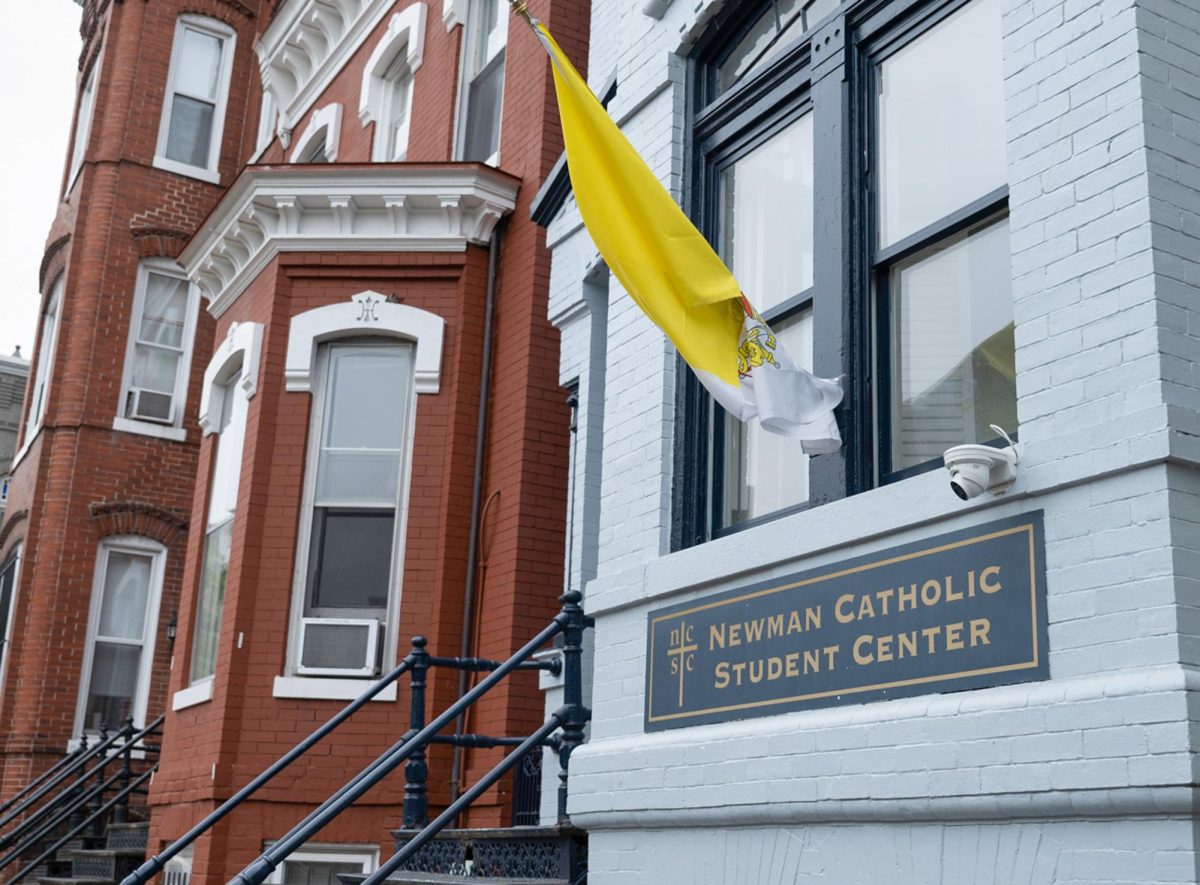From the street, D.C.’s antique stores may look like a small shop to fix anyone’s curiosity, but when you step inside its doors, you are transported into a paradise of museum-quality artifacts, art and age-old furniture.
D.C. is home to a few rich antique shops where visitors can find a distinct narrative – sometimes a tale of a distant origin or a surprising find. Throughout last month, I explored D.C.’s vibrant antique scene, uncovering stories hidden within collections around the District.
Here is the history behind five memorable, foreign antiques from two shops located within walking distance from GW – L’Enfant Gallery in Georgetown and the Dupont Little Flea Market in Dupont Circle:
Golden Mandalay sitting Buddha statue
Beside the front register near the entrance of the four-floored L’Enfant Gallery, I found a sitting Buddha statue whose story winds from Myanmar to Japan and finally to America. Peter Colasante, the director of L’Enfant Gallery, said the statue was crafted from wood and bejeweled with mirror stones mimicking the appearance of precious diamonds during the 19th century in Mandalay, the capital of the Kingdom of Myanmar prior to British rule.
He said before it was a collector’s item, the statue – which is priced at $4,000 – was likely a centerpiece of a home altar in Myanmar for daily Buddhist devotions like touching the statue, which could have faded its gold coloring. Colasante said he purchased the statue from Clyde Litton, a former Army surgeon who found the statue in a market in Southeast Asia while he was stationed abroad during the American occupation of Japan and the Korean War in the 1940s and 1950s.
The statue was one of six Buddha statues that Litton sold in his house sale in 2004. Colasante said there are likely 10 sitting Buddha statues to every 100 standing ones, making this antique a particularly rare find.
Cameroonian shield
Colasante said foreign diplomats and politicians frequently visit his shop, but one of his most memorable visits came from a delegation of dignitaries who were giving a Cameroonian chief a tour of D.C. several years ago, during which he gave the chief an antique as a gift.
Colasante said the chief gave him his wooden shield out of appreciation after Colasante gifted him an antique that the chief found to be prized in Cameroon and highly valued by the people from his country.
Covered in white paint and accentuated with black lines that cross at the center and triangulate on the corners, the shield will nearly cover your entire upper body when held. A tranquil face is carved into the center of the shield and painted with reddish brown paint.
Colasante guesses that the shield was made in the first half of the 20th century, valuing the item at about $1,000 to $1,500.
Colasante said his interaction with the chief sparked his passion for African culture and antiques, and he’s since accumulated a collection of at least dozens of objects like African wooden figures, statues and masks at his gallery.
Congo Nkisi
When climbing the steps towards the second floor of the gallery, customers will find a several-foot-tall wooden statue from the Democratic Republic of the Congo of a dog adorned with sharp metal nails across its entire body, giving the statue a frightening, tortured appearance. The wooden dog is covered in what appears to be wiring and rope around its torso and legs, and its face is carved with a gaping mouth that reveals jagged teeth and a pink tongue.
[gwh_image id=”1165487″ credit=”Krishna Rajpara I Assistant Photo Editor” align=”none” size=”embedded-img”][/gwh_image]
Priced at $2,600, Colasante said he acquired the antique from a psychiatrist in D.C., who selected the piece during travels all over the world.
The dog is a Nkisi – an object believed to possess “magical powers” – crafted as a “guardian figure” offering protection. Colasante said other Nkisi were created to bring about longevity and reproduction.
“It is very alien to us,” Colasante said. “I mean, it looks like a dog that’s suffering, right? It’s really like a spirit guardian figure.”
Shah Jahan paintings
A block from the crowded streets of the Dupont Circle farmers market sits the equally vibrant Dupont Little Flea Market, which sells a wide variety of foreign antiques like sculptures, art, coins and decorative knives in addition to music records, maps and jewelry. John Harvey, a former nonprofit executive, created the market in 2019 after he realized he could sell his personal collection of antiques that he accumulated during his years in the nonprofit industry.
Harvey showed me miniature, palm-sized portraits of Shah Jahan, the Mughal emperor who built the Taj Mahal during the 1630s and 40s, and Mumtaz Mahal, Shah Jahan’s wife – both of which were created in the late 19th to early 20th century.
[gwh_image id=”1165486″ credit=”Krishna Rajpara I Assistant Photo Editor” align=”none” size=”embedded-img”][/gwh_image]
Harvey said modern craftsmen of Agra, whose economy was influenced by the decisions of Shah Jahan from centuries ago, created ivory colored marble pieces that he purposely displayed alongside the portraits. He said the octagonal and oval-shaped slabs, decorated with images of flowers, illustrate the connection between the past and present beside the antique miniature paintings and showcase why he loves antiques.
“I love these stories,” Harvey said. “I love the material. I love how everything you see here has meaning at some point.”
Wall of maps
Across from the table of antiques, the Little Flea Market hosts a wall of city maps, like Paris and Jerusalem, and paintings of everyday life from around the world, dating as far back as the 17th century. Harvey said many D.C. customers have international connections, making the international maps and art very popular among the D.C. antique community.
He said any painting of a country that has a large expatriate community in D.C., like New Zealand, Australia and France, usually sells fast.
“There’s certain places in the world that folks here come from or have an affinity with,” he said. “So with my maps, I can sometimes predict what’s going to go fast based on the international community here.”
One of the paintings on the wall depicts a bustling street in Old Jerusalem and was painted in the 1960s, and another engraving from the 1600s depicts Lake Zurich in Switzerland. Antique maps of colonial Peru, 19th century D.C. and 17th century England also adorn the wall.
[gwh_image id=”1165490″ credit=”Jackson Lanzer I Photographer” align=”none” size=”embedded-img”][/gwh_image]
Harvey said customers enjoy hearing the stories behind the art, maps and antiques, which is why he includes information about each item on a tag and tells each antique’s story to his customers.
“These stories resonate with my customers,” he said. “They like a good story.”
Clara Duhon contributed reporting.







